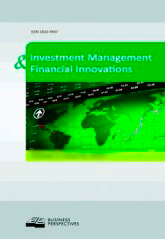Exchange rate intervention and trade openness on the global economy with reference to Brazil, Russia, India, China and South Africa (BRICS) countries
Exchange rate intervention and trade openness on the global economy with reference to Brazil, Russia, India, China and South Africa (BRICS) countries
Author(s): Desti Kannaiah, T. Narayana MurtySubject(s): Economy, Supranational / Global Economy, Business Economy / Management, Socio-Economic Research
Published by: ТОВ “Консалтингово-видавнича компанія “Ділові перспективи”
Keywords: exchange rate as an instrument of macroeconomic stabilization; global economy; trade;
Summary/Abstract: Currently, the economy of the world is trapped in interdependent global economic web. The countries of the world are mutually dependent on one another’s in imports, exports, fiscal and monitory policies in terms of stability. This is going to be great challenges and opportunities to the emerging economies. These countries have greater trade openness to the international trading and are more affected by inflation. The BRICS represent about 40 percent of the world population; encompass over 25 percent of the worlds land coverage and comprise huge natural resources. BRICS share of a little over 10 percent in world Gross Domestic Product (GDP) and less than 4 percent in world trade in 1990, BRICS (with the recent inclusion of South Africa to the forum) now constitutes about 25 percent of world GDP in terms of PPP (Purchasing Power Parity), and 15 percent of world trade. The increase in GDP implies that the economic size of BRICS in terms of its share in world GDP has expanded by 150 percent in the past two decades, and they also estimated that the GDP of these countries may cross 47 percent of the world GDP, and will emerge as strong economic power in the world, and they contribute one fifth of the global economic output. The BRICS economies operate under varied monetary policy frameworks and procedures. Brazil and South Africa have inflation targeting regimes, while other countries follow multiple indicator frameworks. There are various other indicators, such as trends in inflows and outflows of foreign direct investment (FDI), trade openness, current account balance, forex re¬serves and economically active labor forces that could make BRICS a formidable force to reckon with in future. This study applies significantly exchange rate, Forex reserve and trade openness on the global economy of BRICS countries.
Journal: Investment Management and Financial Innovations
- Issue Year: 14/2017
- Issue No: 3
- Page Range: 339-352
- Page Count: 14
- Language: English

